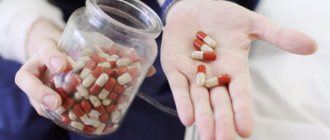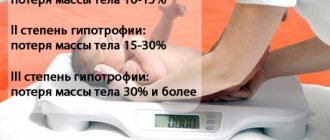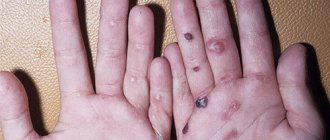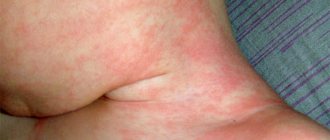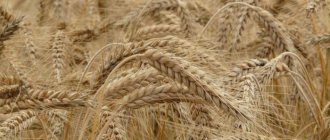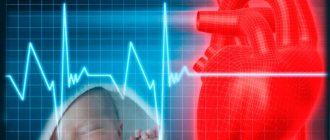Causes of kidney diseases
Kidney disease in children is caused by many infections that affect the child's body, such as acute respiratory disease, tonsillitis or scarlet fever. Banal hypothermia of the body can cause kidney dysfunction.
Therefore, if a child gets sick with any infectious disease, you should consult with a nephrologist - a specialist in the urinary system - during treatment. Sometimes a hereditary predisposition to renal failure is recorded.
It is important to know what kind of kidney diseases there are, it can be:
- pyeloniphritis;
- glomerulonephritis;
- renal failure;
- kidney cancer.
In general, these same diseases also occur in adults; they occur as in children. There are acute and chronic forms of diseases. The only difference between kidney disease in children and adults is the symptoms. A child’s body reacts to illness in its own way.
Causes
Various renal pathologies can provoke pain.
In particular, almost every child in early childhood is exposed to infectious damage to the organs of the urinary system.
Due to the negative effects of bacteria, serious diseases such as pyelonephritis, cystitis and urethritis, also accompanied by pain, can develop. Pyelonephritis is an inflammatory process, as a result of which the renal organs are seriously affected, or rather, there is a malfunction of the parenchyma.
Most often, pyelonephritis occurs in girls due to the special anatomical structure of the urinary system.
Nephroptosis, which is characterized by mobility of the renal organ, can provoke pain symptoms. The kidney extends beyond its natural bed, compresses surrounding organs, and as a result, pain symptoms appear.
Pain with nephroptosis can occur if, due to pathological mobility of the kidney, the ureter is compressed or twisted.
The kidney organ can rotate around its own axis, causing stretching and twisting of the arteries.
Painful symptoms may appear if a high amount of salts is concentrated in the child’s kidneys, which causes sand and then stones.
Being stationary, the stones do not provoke any pain symptoms. If they begin to move, their sharp protrusions damage the mucous membrane of the organ, and accordingly, the kidneys begin to ache.
The baby’s kidneys also hurt when glomerulonephritis is detected. This is a disease in which the kidney glomeruli are damaged.
Characteristic symptoms of this pathology are a decrease in the amount of urine excreted, as well as an increase in blood pressure.
With glomerulonephritis, headaches occur, for this reason the child becomes whiny. Glomerulonephritis is also characterized by symptoms such as proteinuria and hematuria.
The most dangerous kidney disease is renal failure, which, unfortunately, affects not only adults, but also children. This disease not only causes severe pain, but also significantly reduces the child’s quality of life.
With kidney failure, organs practically stop functioning, as a result of which the blood is not cleared of dangerous toxins and other harmful substances.
This pathological situation provokes the occurrence of general intoxication of the body, and in the absence of medical assistance, the death of the child occurs.
Symptoms of kidney disease
Kidney diseases have the following symptoms:
Signs of pyelonephritis in children
- The urine turns pink, a phenomenon called hematuria. This is a manifestation of CKD (chronic kidney disease), usually pyeloniphritis. At the same time, it can be a symptom of urolithiasis, inflammation or even injury. Before taking your child to the doctor, you need to remember whether he was given beets or grapefruit the day before. The juices of these plants sometimes turn the urine light pink.
- If a child has a fever, then these are definitely not the consequences of beet juice, these are most likely symptoms of kidney disease.
- High blood pressure indicates that there are problems with the kidneys.
- With diseases of the urinary system, especially if there is chronic kidney disease, children's face and sometimes arms and legs swell in the morning. By evening, swelling usually goes away. In fact, in medical practice, edema is considered the main symptom of kidney failure in children.
- If a child has a sharp increase in the amount of urine excreted, then this is a sign of chronic renal failure (CRF). This phenomenon is called pollakiuria.
- If the baby, on the contrary, begins to “walk like a baby” less, then this is anuria - a rather clear manifestation of renal colic or acute renal failure. In this case, it is necessary to provide the child with emergency medical care.
- The baby's dry, pale skin indicates that he may have glomerulonephritis.
- With kidney disease, the child’s general well-being sharply deteriorates, apathy occurs, and appetite disappears.
- With kidney failure, pain in the lumbar region often occurs. Your head may also hurt.
You need to be especially careful with babies, because they cannot tell where it hurts. Therefore, if your baby’s tummy is swollen, or he constantly cries, and his urine has become a different color and has a strong unpleasant odor, you should definitely show him to the doctor.
If you consult a specialist in a timely manner, almost any kidney disease can be completely cured. However, a negligent attitude towards the disease and towards the child can lead to the development of a chronic form of pathology. In some cases, this can turn into an oncological disease, and the prognosis for treatment is extremely disappointing.
Clinical manifestations
A child’s behavior changes when his kidneys begin to hurt, so parents simply cannot help but notice and miss such symptoms.
Children become weak, apathetic, and even funny toys cease to interest them. In addition, when performing even very simple actions, kids get tired very quickly.
With kidney pathologies, intense pain most often occurs, renal colic, which can be either short-term or last several hours.
When symptoms indicating kidney disease appear, it is important to pay attention to the urine excreted. If its color changes, if foreign impurities are concentrated in it, it means that the kidneys are unable to function properly.
It is especially dangerous if there are traces of blood in the child’s urine. These symptoms indicate inflammatory, infectious or oncological problems.
Dangerous symptoms are traces of swelling that initially appear on the baby’s face and subsequently spread to the limbs.
Due to a violation of the outflow of fluid, which occurs against the background of a decrease in the level of kidney functionality, the child is provoked by acute pain and specific “bags” under the eyes.
The child becomes tearful, often experiences increased thirst, and complains to parents about constant dryness in the mouth.
If pain symptoms in the kidneys occur due to inflammatory or infectious processes, an additional symptom such as fever appears.
It is easier to determine the symptoms of kidney disease in an already grown-up child, who is ready to tell his parents what worries him and where the pain syndrome is localized.
It is much more difficult to identify symptoms of kidney problems in tiny babies. However, with increased care on the part of parents, it is still possible to identify such symptoms.
An increase in the size of the tummy and a change in the pressure of the stream during urination should cause alarm.
Strong crying of the baby during the urination process, all the more, indicates pathologies of the organs of the urinary system. Urinary incontinence can also be an alarming symptom.
Failure of the urinary process is always an indicator indicating kidney problems. If the number of urges becomes more frequent and the volume of urine decreases, it means that the baby’s health has deteriorated.
Diagnostic measures
If one or even more than one symptom appears, you should immediately consult a specialist. To diagnose the disease, data from urine and blood tests, as well as hardware methods, are used:
- Ultrasound examination of the kidneys.
- Urography.
- Computed tomography of the lumbar region.
The more accurately the diagnosis is made, the more correct and faster the treatment will be, so you need to contact a specialist: a nephrologist or urologist.
Treatment of kidney diseases
Since the kidneys hurt for various reasons, the treatment is individual in each case. In addition, not all diseases can be treated with conservative methods; sometimes only surgery can correct the situation.
Video about diagnosis, treatment and prevention of kidney diseases in children:
Thus, in order for a sick child to recover faster, complex treatment is usually prescribed, sometimes even including methods of traditional medicine:
- The course of drug treatment usually includes antihypertensive drugs that lower blood pressure, antihistamines, and allergy relievers. And also diuretics - drugs that increase urination. If there is an infection in the body, a course of antibiotics is prescribed.
- Surgical treatment is used for acute renal failure, as well as in cases of diagnosis of oncology.
- Traditional medicine includes various decoctions of medicinal plants. It is important to understand that before consuming such decoctions, you must consult a doctor; self-medication in this case can lead to an unexpected allergic reaction. In addition, in the case of childhood renal failure, treatment is carried out with products that do not contain ethyl alcohol, which is sometimes present in various tinctures. The most beneficial for the urinary system are considered to be decoctions of burdock, aspen bark, birch buds and rose hip root.
Main features
It is important to recognize in time the symptoms characteristic of diseases of the urinary organs in children. It is necessary to be wary if the child’s urination pattern and urine composition are disturbed. This can be understood by more frequent or, conversely, rare acts of urination. Usually the child begins to ask to go to the toilet more often at night. The color and smell of urine changes.
All kidney diseases have similar symptoms:
- acute pain in the lower back;
- the appearance of “renal” edema (in more advanced cases, edema spreads to the face, lower back, and genitals);
- pale skin color;
- increased blood pressure;
- temperature increase;
- thirst.
In some cases, children do not have strong signs. It is important to be able to identify changes in the baby’s well-being so that a timely diagnosis can be made.
In children under one year old
Parents of babies need to be especially careful. Such babies will not be able to complain about discomfort when urinating. Symptoms in children of this age:
- increase in tummy size;
- change in urine color;
- in boys there is a weakening of urine pressure (with phimosis the symptom is the same).
In children older than one year
Parents of children who are about a year old should also be concerned if the symptoms are as follows:
- the baby complains of pain in the lower abdomen;
- afraid and refuses to go to the potty due to pain when urinating;
- small volumes of urine, which has not been observed before;
- temperature increase;
- frequent or rare urination.
Rehabilitation after treatment
Symptoms of kidney disease indicate that the baby needs urgent treatment. He can be sent for treatment to a specialized rehabilitation center. Where the child will undergo a course of activities aimed at improving kidney function and overall health. These include:
- Therapeutic gymnastics class.
- Race walking.
- Back and pelvic massage.
- Irradiation of the kidneys with infrared rays.
- Application of UHF therapy.
- Paraffin wrapping.
These procedures improve blood circulation and, as a result, the supply of oxygen and nutrients to the kidneys, which has a beneficial effect on their condition.

